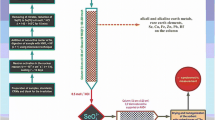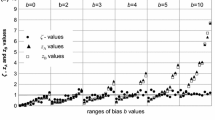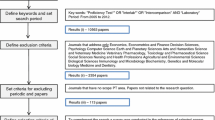Abstract
Proficiency data with stated uncertainties represent a unique opportunity for testing that the reported uncertainties are consistent with the Guide to the expression of uncertainty in measurement (GUM). In most proficiency tests, however, this opportunity is forfeited, because proficiency data are processed without regard to their uncertainties. In this paper we present alternative approaches for determining a reference value as the weighted mean of all mutually consistent results and their stated uncertainties. Using an accepted reference value each reported uncertainty estimate can be expressed as an E n number, but a value of \( |{E_n }| {<} 1\) confirms its validity only if the uncertainty of the reference value is negligible in comparison.
Reference values calculated for results from an International Measurement Evaluation Programme (IMEP-9) by “bottom up” as well as “top down” methods were practically identical, although the first strategy yielded the lowest uncertainty. A plot of individual coefficients of variation (CV) versus E n numbers helps interpretation of the proficiency data, which could be used to validate relative uncertainties down to <1%.

Similar content being viewed by others
References
ISO 5725-1/6 Accuracy (trueness and precision) of measurement methods and results, International Organization for Standardization, Geneva
ISO Guide 43-1/2 (1997) Proficiency testing by interlaboratory comparisons, International Organization for Standardization, Geneva
ISO 17025 (2004) General requirements for the competence of testing and calibration laboratories, International Organization for Standardization, Geneva
ISO (1995) Guide to the expression of uncertainty in measurement, GUM International Organization for Standardization, Geneva
ISO 13528 (2005) Statistical methods for use in proficiency testing by interlaboratory comparisons, International Organization for Standardization, Geneva
Cox MG (2002) Metrologia 39:589–595
Heydorn K (1991) Mikrochim. Acta (Wien) III:1–10
Damsgaard E, Heydorn K (1987) J Radioanal Nucl Chem 113:267–273
Recommendations of an international study group (2001) Accred Qual Assur 6:274–277
Robouch P, Younes N, Vermaercke P (2003) PTB-Bericht PTB-IT-10:149
Papadakis I, Nørgaard JV, Vendelboe E, Nevel LV, Taylor PDP (2001) Analyst 126:228–233
Papadakis I, Taylor PDP (2000) Accred Qual Assur 5:331–338.
Heydorn K, Madsen BS (2005) Accred Qual Assur 10, 403–408
Acknowledgement
The author is grateful to Helle Rootzén from Informatics and Mathematical Modeling for stimulating discussions in the ISO Technical Committee 69 Applied Statistics and for her encouragement to pursue this line of thinking.
Author information
Authors and Affiliations
Corresponding author
Rights and permissions
About this article
Cite this article
Heydorn, K. The determination of an accepted reference value from proficiency data with stated uncertainties. Accred Qual Assur 10, 479–484 (2006). https://doi.org/10.1007/s00769-005-0043-2
Received:
Accepted:
Published:
Issue Date:
DOI: https://doi.org/10.1007/s00769-005-0043-2




